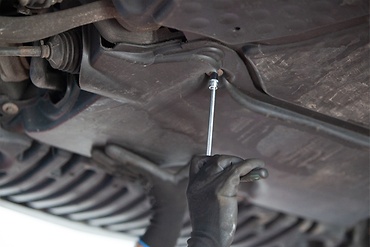If there is a knocking or clunking noise in the area of the front axle when the car is traveling over road bumps, potholes or curbs, then there is usually a defect in a component of the wheel suspension.
Table of Contents
- LEMFÖRDER compression ball joint
- Replacing a Defective Compression Ball Joint
- Importance of Replacing Defective Compression Ball Joint
- Tools Required for the Change of a Broken Ball Joint
- Safety Precautions During Replacement
- Post-Replacement Maintenance and Care
- Tips to Avoid Common Mistakes During Replacement
- Frequently Asked Questions - Replace Ball Joints

LEMFÖRDER compression ball joint: New vs. faulty
Workshop Tip - Replacing a Defective Compression Ball Joint
Symptoms of faulty ball joint – how to check
The side of the front axle from which the (vibration) noise is emanating can already be determined during a test drive. The type of noise also already provides certain indications for maintenance regarding which components might be faulty.

Back in the workshop
On the vehicle lift, the trained eye of an expert may be sufficient to see where the noise is coming from, such as if the sealing sleeve of a ball joint is damaged. Nevertheless, at first glance it is not always obvious where the sound is coming from. In this case, all joints of the front axle need to be checked until the bad component is found. If the compression ball joint is defective as in our case, the control arm (wishbone) should also be examined more closely. If the control arm does not show any damage to the bearings, it is sufficient to change the bad compression ball joint. The exact work steps for replacing the broken compression ball joint vary from vehicle to vehicle and are specified by the vehicle manufacturer.
How-to-guide
Replacing damaged compression ball joint on Mercedes Benz A160 front axle
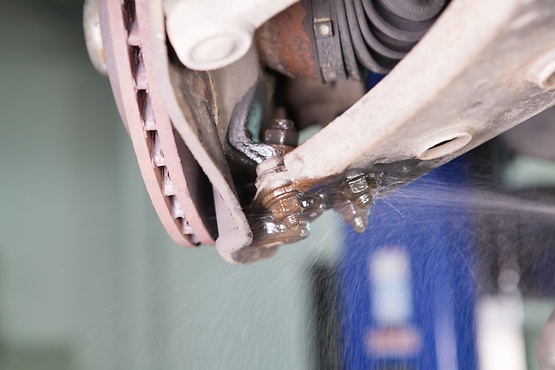
Note: The pictures used in this practical tip and the procedure described for a replacement of the compression ball joint on a Mercedes Benz A160 (W169) are examples and may vary depending on the vehicle manufacturer and axle design.
- Raise the vehicle and remove the front wheels.
- To loosen the fastening screws and fixing nuts of the compression ball joint more easily, spray them with rust remover and allow to act for a few minutes.
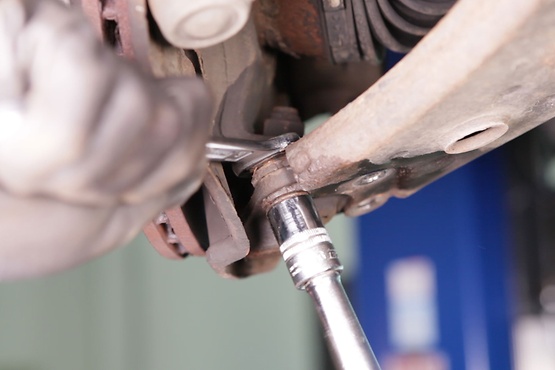
- Loosen the fastening screws of the broken ball joint on the control arm and remove the nuts.
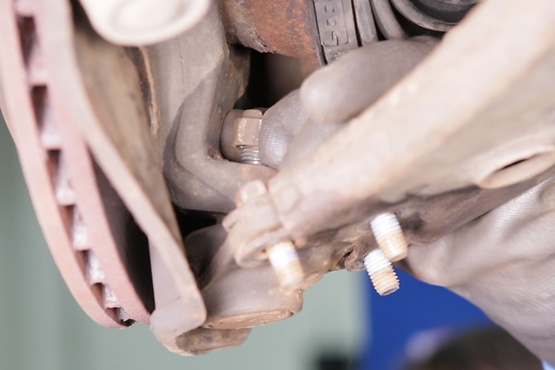
- Loosen and remove the fixing nut of the ball joint on the steering knuckle.
Tip: If the ball stud rotates, hold the ball stud in place with a hexagon socket.

- Remove the bad or worn ball joint from the control arm.
- Loosen the compression ball joint on the steering knuckle using a suitable special tool.
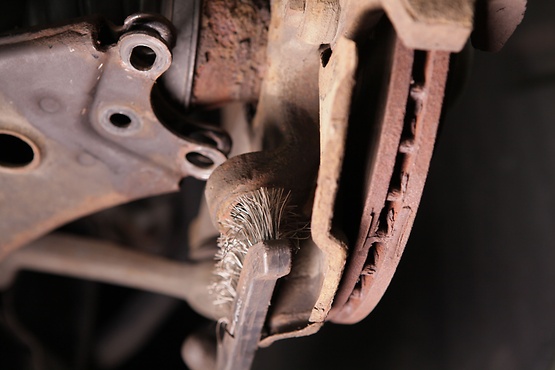
- Clean the cone connection.
Tip: For better sealing and durability of the ball joint sleeve, a little silicone grease can be applied to the contact surface.
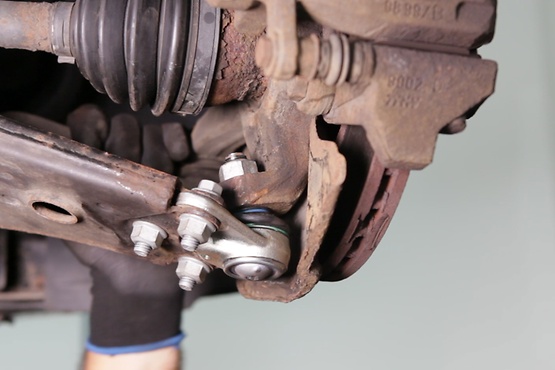
- Insert new compression ball joint in the control arm and steering knuckle and tighten with new fixing nuts.
- Reinstall front wheels. Lower the vehicle and tighten the wheel studs to the tightening torque specified by the vehicle manufacturer.
- Measure the chassis and adjust it using the various holes on the compression ball joint if necessary.
- Finally, carry out a test drive.
Importance of replacing defective compression ball joint
Ball joints can degrade when contaminants such as dirt, grit, and impurities enter them or when grease leaks out, resulting in inadequate lubrication. Furthermore, the combination of rusting and ongoing wear and tear can be detrimental to these critical suspension components. While properly functioning ball joints allow for smooth side-to-side movement, they should not exhibit any wiggling or sudden up-and-down movements. Such movements are a clear indication that it is time to replace ball joints.
If you are wondering what a broken ball joint can do, you must know that it may cause a mysterious clunking noise or drifting steering in your car. Additionally, once they are worn out, they can have a serious impact on your steering and suspension. If a ball joint fails altogether, it can cause your car’s wheel to dramatically fall off. Hence, replacing defective compression ball joints is of utmost importance, thus ensuring smooth movement of your car.
Tools required for the change of a broken ball joint
Replacing damaged compression ball joints demands certain tools to ensure a proper replacement. Here are a few tools you must keep handy before beginning with the replacement:
- Socket, ratchet, torque, and extension wrenches
- Ball joint press kit which includes C-clamp and adapters
- Socket air tools
- Needle-nose pliers
- Ball joint separator
- Screwdrivers
- Shop towels
- Rust penetrant
- Tyre iron
- Side cutters
- Axle press
- Hammer
Safety precautions during replacement
After collecting your broken ball joint replacement tools in one place, it is time to consider some important safety precautions to be taken during the replacement. Let’s learn in detail about these safety precautions below.
- It is critical to use a proper ball joint press. Ball joints were previously removed by punching or hammering, but these techniques are no longer considered ideal options for their replacement.
- Make sure you have enough space to perform the replacement. Since the ball joint press demands a certain amount of space for it to operate appropriately, it is best to use a hoist when possible. If you are working on the ground with axle stands, make sure you have enough ground clearance for the job.
Post-replacement maintenance and care
To ensure the longevity and safety of your vehicle's suspension system, it is critical to carry out post-replacement maintenance and care after replacing damaged compression ball joints.
- Check Torque Specifications: Ensure that all fasteners, including ball joint nuts and bolts, are torqued according to the manufacturer's recommendations.
- Lubrication: Make sure the newly installed ball joints are lubricated properly as per the manufacturer's instructions. As part of your routine maintenance, inspect and grease them on a regular basis.
- Wheel Alignment: Ensuring proper alignment helps to protect the ball joints and tyres from premature wear and tear.
- Inspect Suspension Components: While you are under the car, look over the control arms, bushings, tie rods, and struts or shocks. To keep the suspension system in good working order, any worn out or damaged components must be replaced as soon as possible.
- Inspections: Conduct visual inspections of the ball joints on a regular basis to identify signs of damage, or leaks. Additionally, look for unusual noises or handling issues, such as excessive play or vibrations, which can indicate ball joint problems.
- Drive With Caution: Beware of hitting potholes, curbs, or other road hazards at high speeds, as this can place undue strain on the suspension system.
Tips to avoid common mistakes during replacement
If you are not a professional, making common mistakes during the ball joint replacement could be a possibility. Here are a few tips to avoid making them:
- When replacing ball joints in a car, use the manufacturer's recommended procedures and tools.
- To avoid over- or under-tightening, ensure proper torque on fasteners.
- Lubricate ball joints as directed and re-grease as needed.
- To avoid uneven tyre wear, check and adjust wheel alignment after ball joint replacement.
- Instead of reusing old hardware, use brand-new nuts and bolts.
- Prioritise safety by wearing appropriate gear and using jack stands to support the vehicle.
- To ensure quality work, take your time and avoid rushing.
- Keep an eye out for other suspension issues and address them as soon as possible.
- Consider seeking professional assistance if you are unsure or lack experience.
Nice-to-know
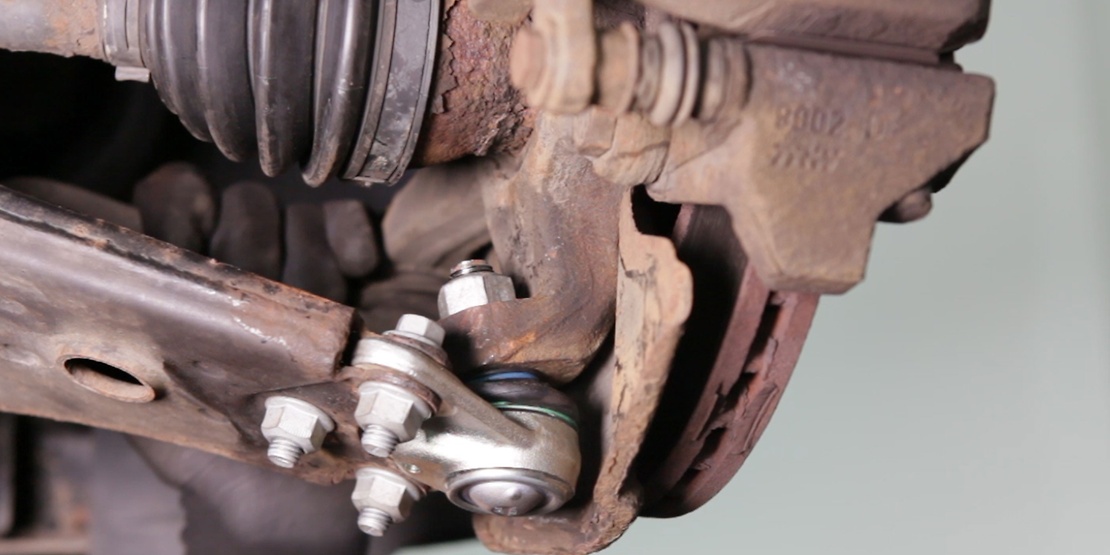
From dismounting the defective compression ball joint up to installing the new one: follow each step in the video.
Frequently asked questions - replace ball joints
How does regular maintenance impact the longevity of a compression ball joint?
Regular maintenance will help in ensuring proper lubrication and optimum health of the ball joints. This further reduces the need for replacement, thereby ensuring the longevity of a compression ball joint.
ZF Aftermarket product range
Discover the complete portfolio of steering components in our product catalog.
